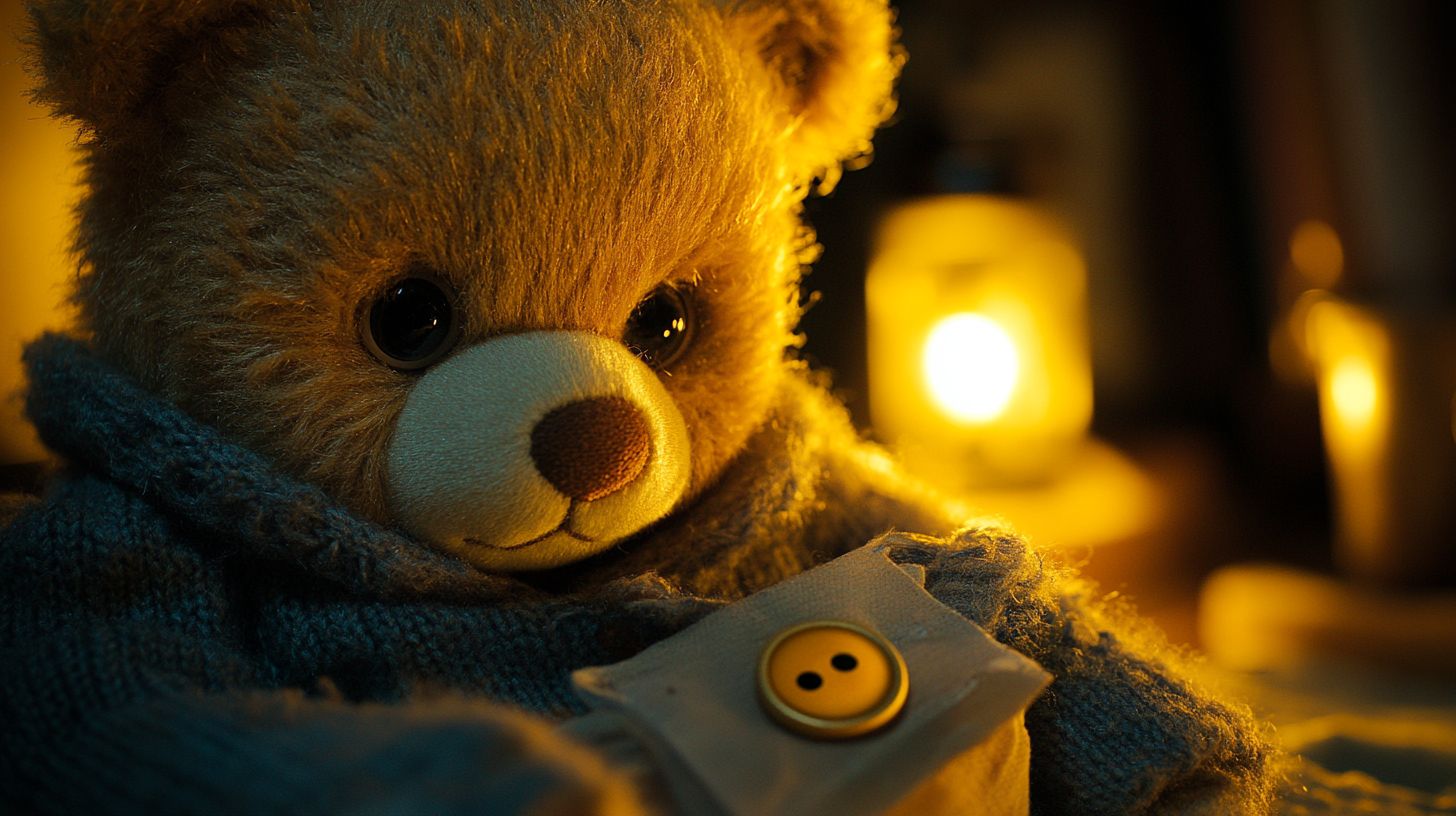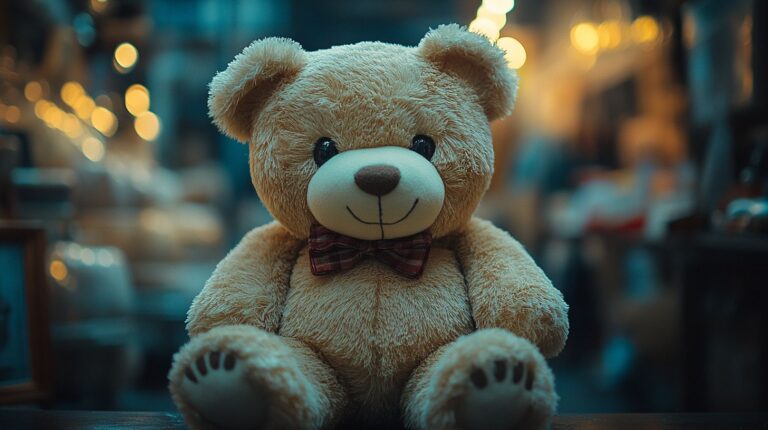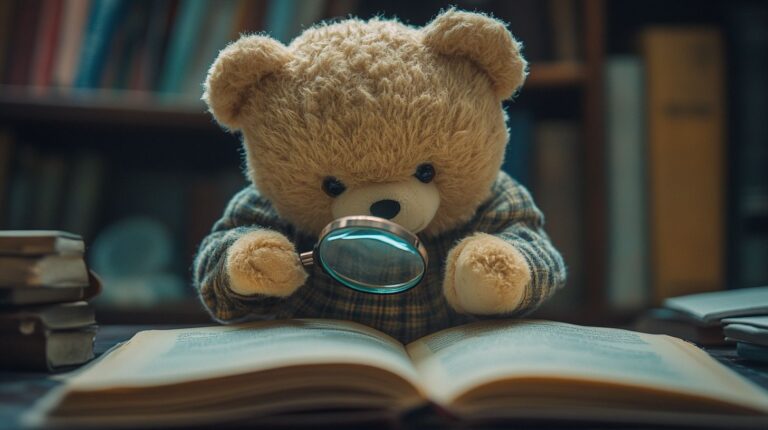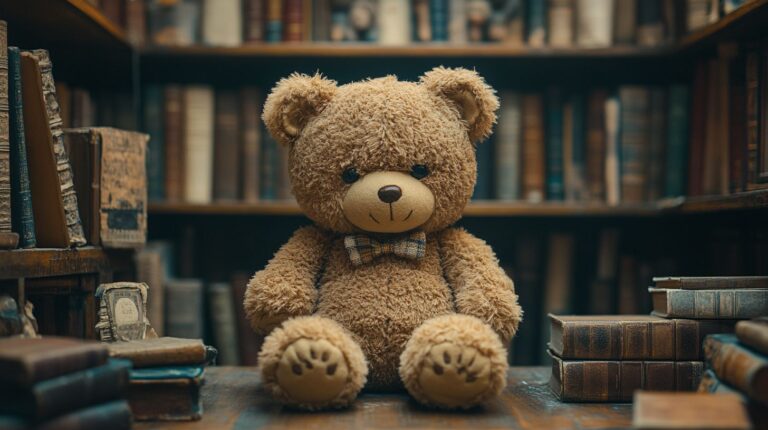Fancy discovering the story behind your old teddy? There's something rather magical about uncovering a bear's history, and I've become quite obsessed with tracking down these furry tales. The first thing to look for are those telltale maker's marks – they're often tucked away in the left paw pad or hiding along the seams. If you're lucky enough to spot Steiff's signature button-in-ear, well, that's rather special.
The way your bear is put together can reveal loads about its age. Those charming rod joints usually point to the pre-1920s era, whilst boot-button eyes (which I absolutely adore) typically mean your bear came into the world before 1918. The stuffing's quite fascinating too – proper vintage bears were filled with wood wool or kapok, none of this modern synthetic business.
Mind you, the outside's just as important as what's inside. Genuine mohair or old-school plush fabric can help pin down when your bear was made. And whilst it's a bit rare, any surviving paperwork is absolute gold dust – even the tiniest scrap might help piece together your teddy's journey through time.
Key Takeaways
Getting to Know Your Teddy's Tale
A proper investigation of your beloved bear starts with those telltale signs hidden in the seams and paw pads. Most manufacturers left their mark somewhere, though some crafty detective work might be needed to spot these vintage labels. I'm particularly fond of checking the left paw first – it's often where the oldest makers placed their tags.
The construction itself speaks volumes about when your furry friend came into being. Those glass eyes weren't always standard issue, you see – early bears often sported boot buttons or hand-stitched features. The joints tell quite a story too; whether they're disc-jointed or string-attached can place your bear within a particular era.
Rather fascinating how different makers used distinct materials through the years. Whilst modern bears might be stuffed with synthetic fibres, your vintage chap could be housing anything from wood wool to kapok. The mohair quality and pattern are dead giveaways too – British manufacturers like Merrythought had their own signature weaves.
Tracing ownership can be a bit of a puzzle, though old family snaps often provide brilliant clues. Department stores like Harrods or Hamleys sometimes kept records of special editions, and those tatty old receipts tucked away in Gran's drawer might just reveal where your bear first found its home.
Mind you, dating these treasures isn't always straightforward. Sometimes what looks Victorian might actually be a rather clever 1950s reproduction. Best to examine everything carefully – from the stitching pattern to the way the nose was embroidered. These little details often hold the key to your teddy's true age.
Identifying Manufacturer Marks and Labels
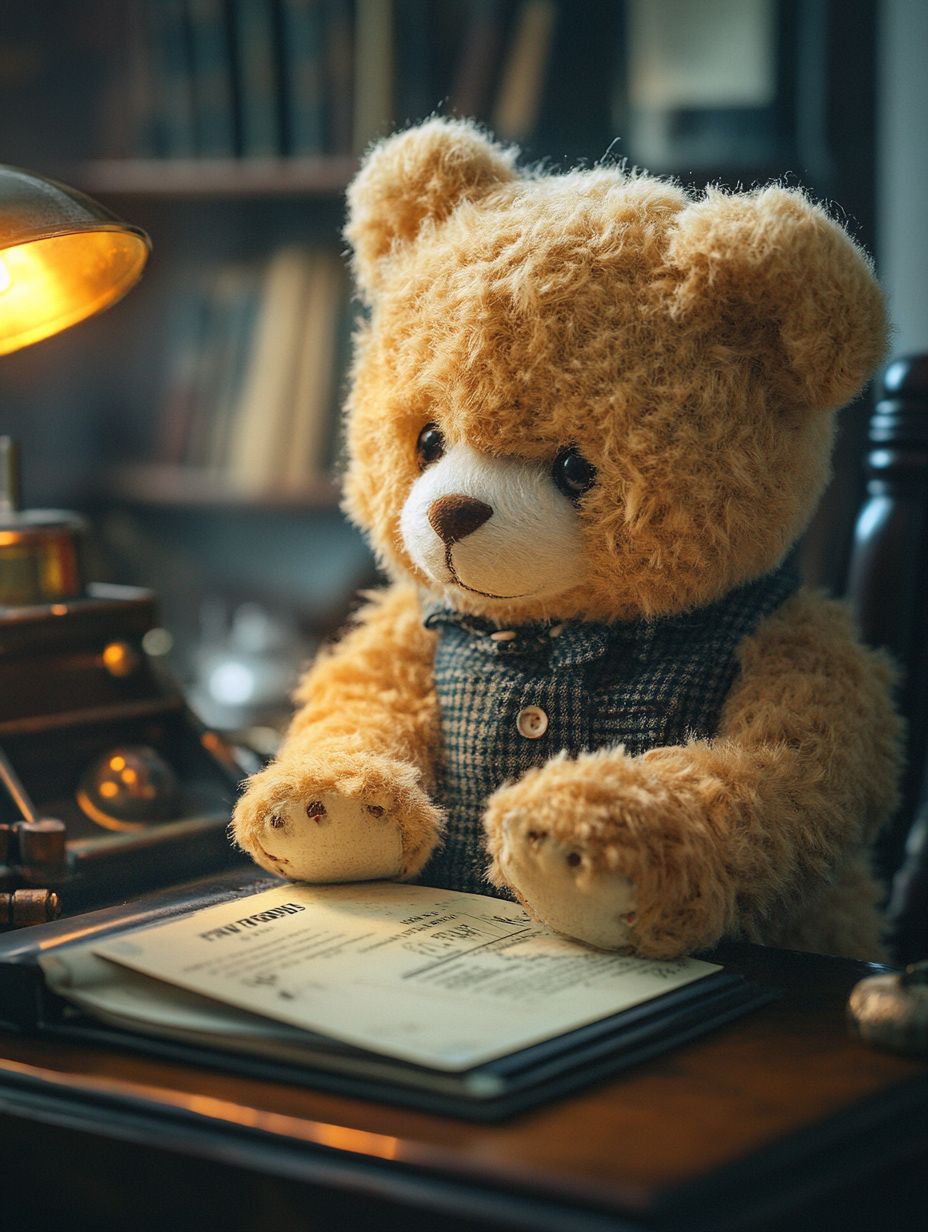
When hunting down the origins of an old teddy bear, those telltale manufacturer marks and labels are absolute gold dust. British makers like Merrythought rather cleverly tucked their labels into the left paw pad – quite the useful habit, really. And you simply can't miss Steiff's signature button-in-ear; it's been their calling card for over a century.
Getting properly nosey with your bear can pay dividends. Shine a torch along those seams – it's brilliant how often old labels turn up hidden away in the most unexpected spots.
The really lovely thing about pre-1960s bears is their woven labels, rather different from today's printed versions. Most proudly displayed their heritage too, with "Made in England" or similar declarations stitched right in. Should you spot any manufacturer's codes, do make a note – these little numbers often hold the secret to dating your bear precisely.
For the particularly special specimens – those worth upwards of £500 – it's worth popping down to the V&A Museum's textile department or having a chat with a proper specialist. They're rather brilliant at cracking the code of mysterious maker's marks.
Mind you, one must be a bit careful these days – there are quite a few dodgy sorts about who'll stick fake labels on anything. Best to ensure the stitching matches what you'd expect from the supposed period.
Dating Your Bear's Design Features
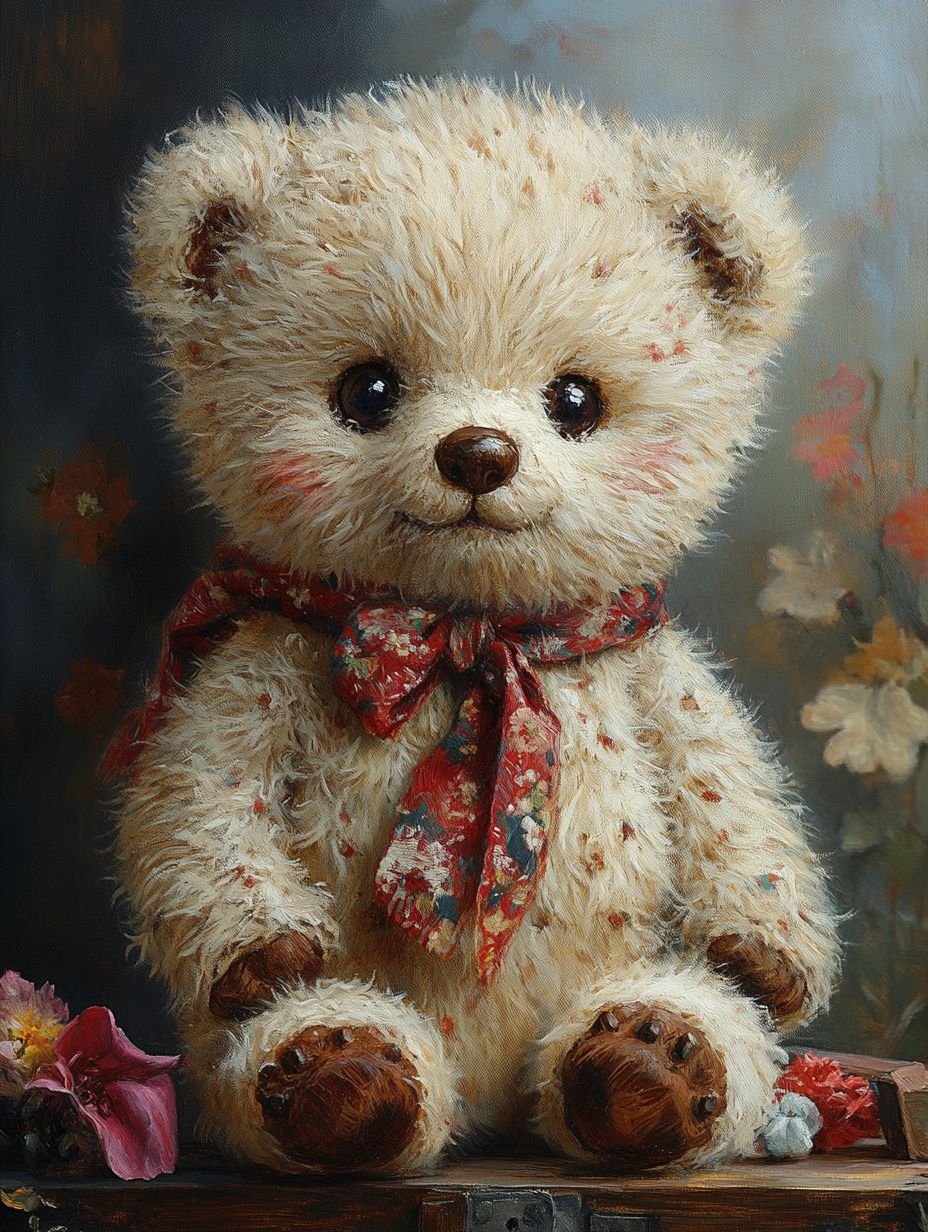
Dating Vintage Bears: A Collector's Guide
Whilst labels and marks are lovely when you can find them, there's something rather satisfying about working out a teddy bear's age from its design features alone. It's rather like being a detective – once you know what to look for, each little detail tells its own story.
| Era | Joint Type | Common Features |
|---|---|---|
| 1902-1920 | Rod joints | Long limbs, mohair, boot-button eyes |
| 1920-1940 | Disc joints | Shorter snouts, glass eyes, kapok filling |
| 1940-1960 | Safety joints | Synthetic fur, printed paws, foam stuffing |
| 1960-1980 | Lock joints | Plastic eyes, machine stitching, nylon fur |
| 1980-2000 | String joints | Embroidered features, polyester fill |
The eyes are often the biggest giveaway – those charming boot-button varieties were all the rage until around 1918, when glass eyes started appearing in shops across Britain. Mind you, it's not quite that straightforward, as some of the posh London makers stuck with traditional materials longer than most.
Stuffing can be particularly telling too. Those lovely old pre-war bears were typically filled with wood wool or kapok, whilst nowadays it's all synthetic materials. The paw pads are another brilliant clue – early bears often had felt or velvet pads, though these gave way to synthetic alternatives sometime in the 1950s. Rather practical really, given how quickly little hands could wear through the originals.
Researching Historical Production Methods
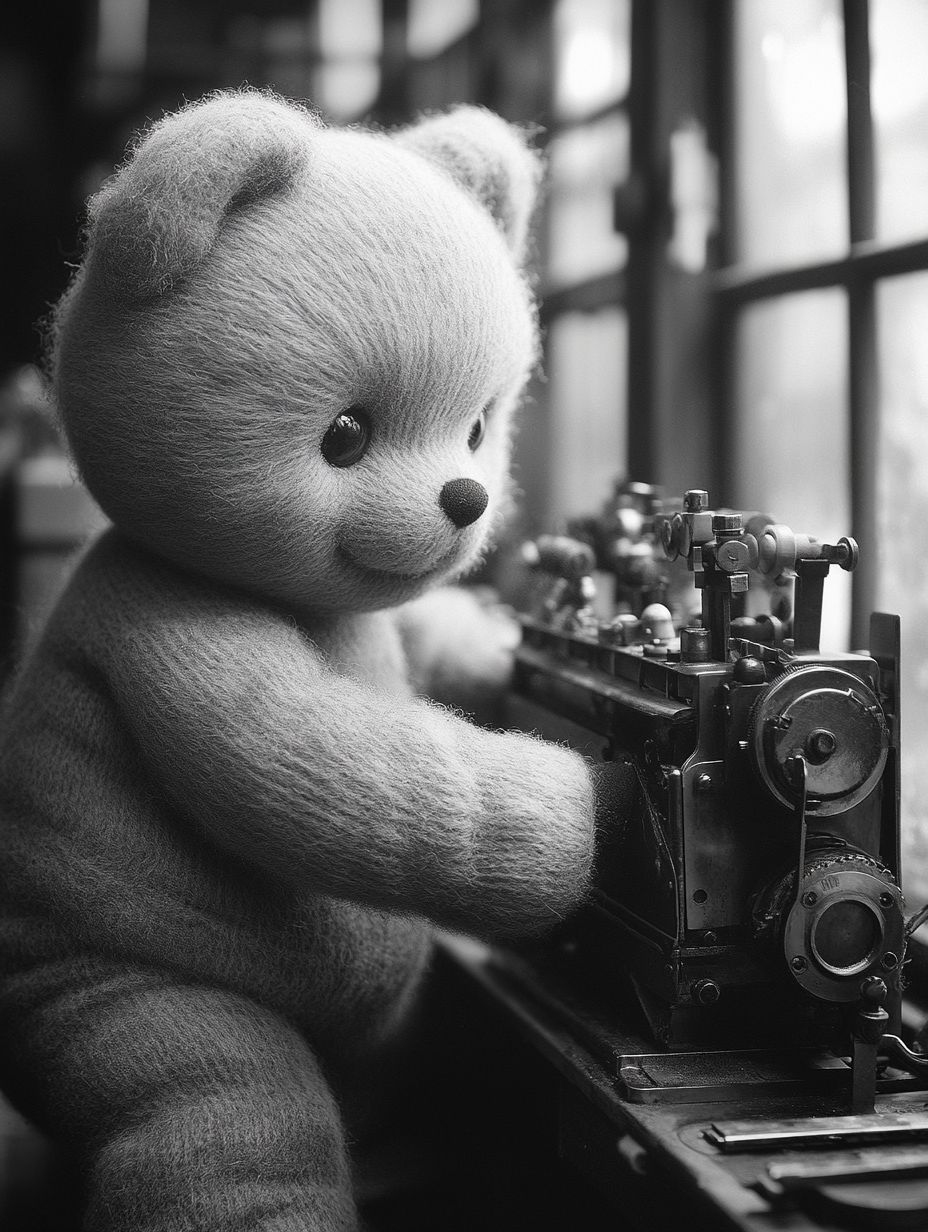
The fascinating world of teddy bear manufacturing has quite a story to tell, evolving from humble cottage industries to rather impressive factory operations.
Back in the early 1900s, these beloved bears were largely crafted by skilled seamstresses, who painstakingly hand-stitched them using mohair, stuffed them with kapok, and fitted them with simple mechanical joints.
British manufacturers like Merrythought, Dean's and Chad Valley left behind a treasure trove of old catalogues and production records. These yellowing documents reveal the most marvellous details – distinctive stitch patterns, clever joint mechanisms and closely-guarded stuffing techniques that help pin down exactly when a bear was made.
The trade journals from the interwar period are particularly fascinating, chronicling the gradual shift towards more mechanised methods.
The war years brought about some rather ingenious adaptations. When materials grew scarce, manufacturers had to get creative – swapping their prized mohair for cotton plush, whilst metal joints gave way to cardboard disc alternatives.
The V&A Museum houses some splendid examples of these wartime bears, showing just how resourceful makers became.
Specialist auction houses have proved invaluable too, their archives brimming with detailed records of factory processes, right down to the specific machinery whirring away on production lines.
Rather remarkable, really.
Tracing Previous Ownership Records
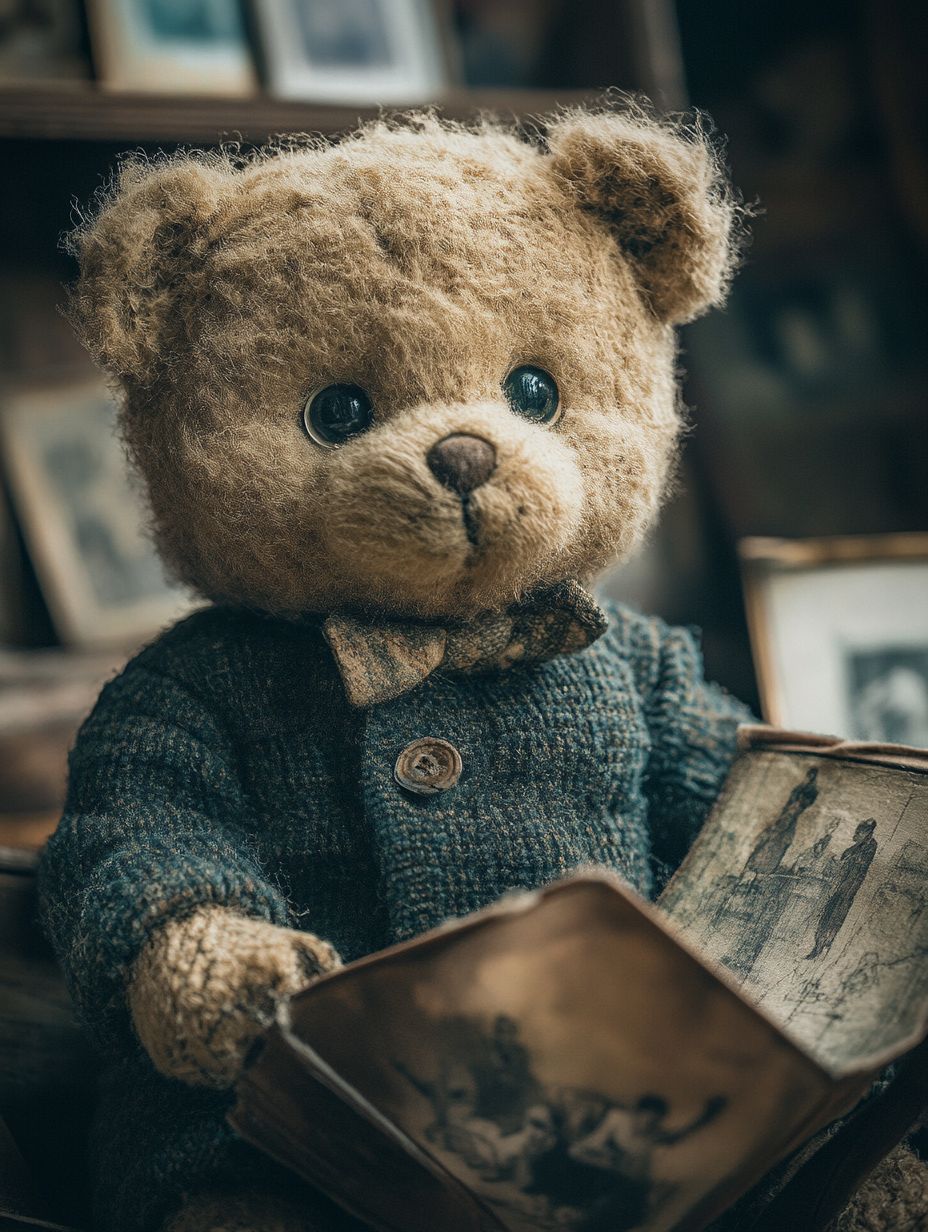
Unravelling a teddy bear's past can be rather like detective work, though it's often quite rewarding. The first port of call is usually any surviving paperwork – old receipts, gift tags, or auction catalogues can offer brilliant starting points, even if they're a bit dog-eared these days.
The real gems are often hiding in plain sight. Those little labels sewn into the seams aren't just for show – particularly if your bear hails from one of the grand old department stores like Harrods or Selfridges. Mind you, their archives can be absolute treasure troves, though you might need to sweet-talk the archivists a bit.
Don't turn your nose up at bears from jumble sales or charity shops either. Local papers often featured rather detailed listings of these events, and you'd be surprised what turns up in those dusty archives.
The most delightful discoveries tend to come from family photo albums – there's something rather magical about spotting your bear lurking in the background of some long-forgotten Christmas morning or birthday tea.
Previous owners can be wonderfully helpful, often sharing tales that bring your bear's history to life. For the posher specimens, auction houses keep rather good records, though they'll typically want £15-20 for a proper dig through their databases.
And whilst it might seem a bit odd, probate records and household inventories sometimes hold the most fascinating surprises about your furry friend's former life. Peculiar where these threads can lead you, really.
Authenticating Materials and Construction
There's something rather fascinating about the way materials reveal a teddy bear's history. Genuine vintage bears tend to show their age through distinct patterns in their mohair or plush fabric – the sort that simply can't be faked by even the cleverest of reproductions.
Mind you, it's not just about what you can see on the surface; the stuffing itself tells quite a tale. While modern bears are packed with synthetic materials, each era used its own particular filling that's become a dead giveaway for dating.
When it comes to spotting the real thing, construction details are absolutely crucial. Those pre-1950s bears often sport distinctive blanket stitching around the edges, and you'll notice their limbs are joined with that characteristic ladder pattern that's become rather sought-after.
The glass eyes are particularly telling – authentic vintage ones develop a unique patina over time, and their mounting technique is frightfully difficult to copy properly.
Original labels can be enormously helpful, though you've got to know what you're looking for. They'll show natural ageing that matches the period, and manufacturers tended to use specific construction methods that varied by decade.
Perhaps most revealing of all are the paw pads – pre-war bears typically came with felt or velveteen versions, whilst later models from the 1950s began featuring synthetic materials.
Rather like wine tasting, recognising these period-appropriate details becomes second nature once you've handled enough genuine examples.
Conclusion
Delving into your teddy bear's past can be utterly fascinating. It's rather remarkable to think that Brits spend more than £4.2 million each year on vintage bears, and there's something quite special about being part of this passionate collecting community. Mind you, whether you're lucky enough to have stumbled across a proper Steiff masterpiece or you're cherishing a well-loved bear from good old M&S, each one carries its own remarkable story. Those tatty patches and wonky stitches aren't imperfections at all – they're precious little chapters in your bear's journey through time, just waiting to be discovered.

